Johanna Bruckner (DE)
responds to political, social and technological developments within society in her work. She takes up the discourse between society and the individual, which has been created by new technologies, and asks about the influences and dependencies of information and the apparently autonomously operating communication systems.
“We are a collection of centuries of molecular agreements of screaming about ways to live. Centuries of holding breath, drawn to the outer shores of the sky”
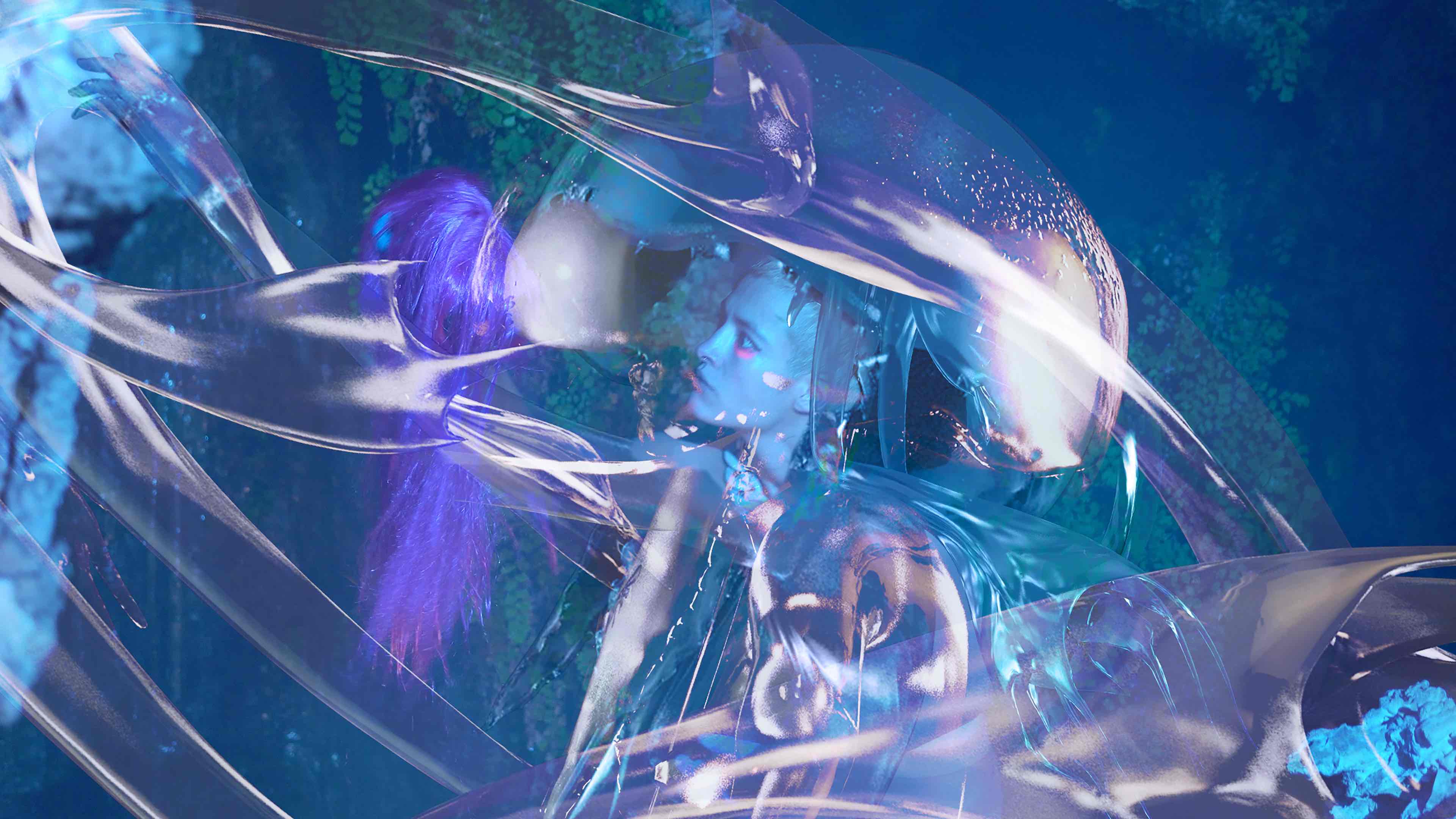
Johanna Bruckner - Molecular Sex, Film Still, courtesy of the artist
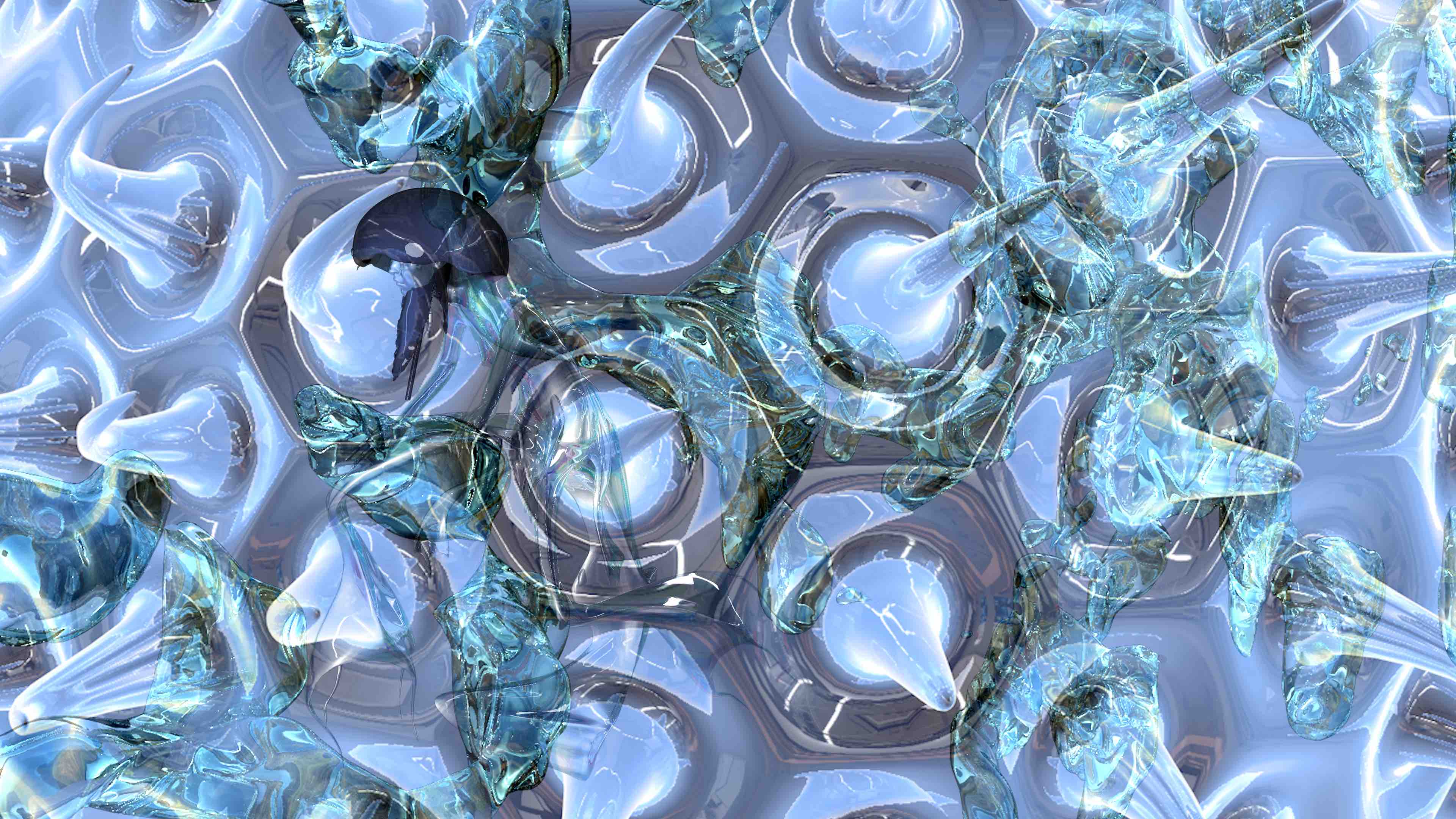
Johanna Bruckner - Molecular Sex, Film Still, courtesy of the artist

Johanna Bruckner - Molecular Sex, Video Still, courtesy of the artist
MOLECULAR SEX by Johanna Bruckner
1. What work are you presenting?
JB: I present the video installation Molecular Sex.
2. What is your personal approach to your art works?
JB: We currently live in intense times…intense times are interesting times…unsettle unknown streaks of wisdom. My recent studio at the Istituto Svizzero in Roma was high up in the tower - like a spaceship reaching into the sky. A bit like in the void of interstellar space - of polar energies and warm winds. One of transition region and vibrational energy. Amplifying and re-distributing my images, shaking them around, rubbing them against our and their past, leaving the powers of gravity. Beginning again and again. Caring for social implications that the technological and ecological transformations, in a global machine of techno-physical governance and labour, do on and with our bodies. Partly as a result of human emergency. Tearing the cloud line, the sun breaks clear. As oscillators of sensory experiences, the images explode and unfolded into signals and codes unknown to themselves. Aesthetics and languages of another temporality. Of vivifying potentialities and ubiquitous desire… Conceiving of bodies as affective multiplicities allows for differentiated and speculative perspectives on the interaction between physical and non-human entities. Thus I ask how indeterminacy of being, today, might inform hybrid temporalities better tooled to deal with current technological, political and ecological changes.
3. What is alien to you?
JB: Black crystalline gas escaping my bodily openings…Accelerating into coal-stardust. Turn to the occupied space beyond the Earth, reclaim its implicit queer-ness as unknown-ness, recall the presence of these recent pasts… which are never still… waves of synthetic, diffracted waste, of radioactive glare. Through atmospheric escape gaseous substances of the earth escape into space and form extracorporeal structures. How can these non-human physical formations and their languages be imagined and narrated. How can they help us to imagine possible future worlds… Escape exposes living systems to a novel aggregation of atoms opening the inorganic past of the atmo/biosphere to new present-futurity… The unseen and the unbearable doesn’t need a landing place - its fossil fuels are its driving monsters, stars burning out, making the water flammable, turning it into gaseous rock. As oscillators of sub-sensory experiences reorganizing present politics as orbitary agency of queer human and more-than human-ness. Of synthetic embrace…
4. How do you change perspective?
JB: The future is often portrayed as a breakdown of the human condition. In contrast, I see the hybridisation of the human and the non-human as the seed of an indeterminacy and general crossing of the boundaries of being. Imagination is a central instrument for the creation of new temporalities. By means of immersive, affective aesthetic languages and technical means I try to change the limits of the perceptual apparatus.
Johanna Bruckner – How will I remember your embrace

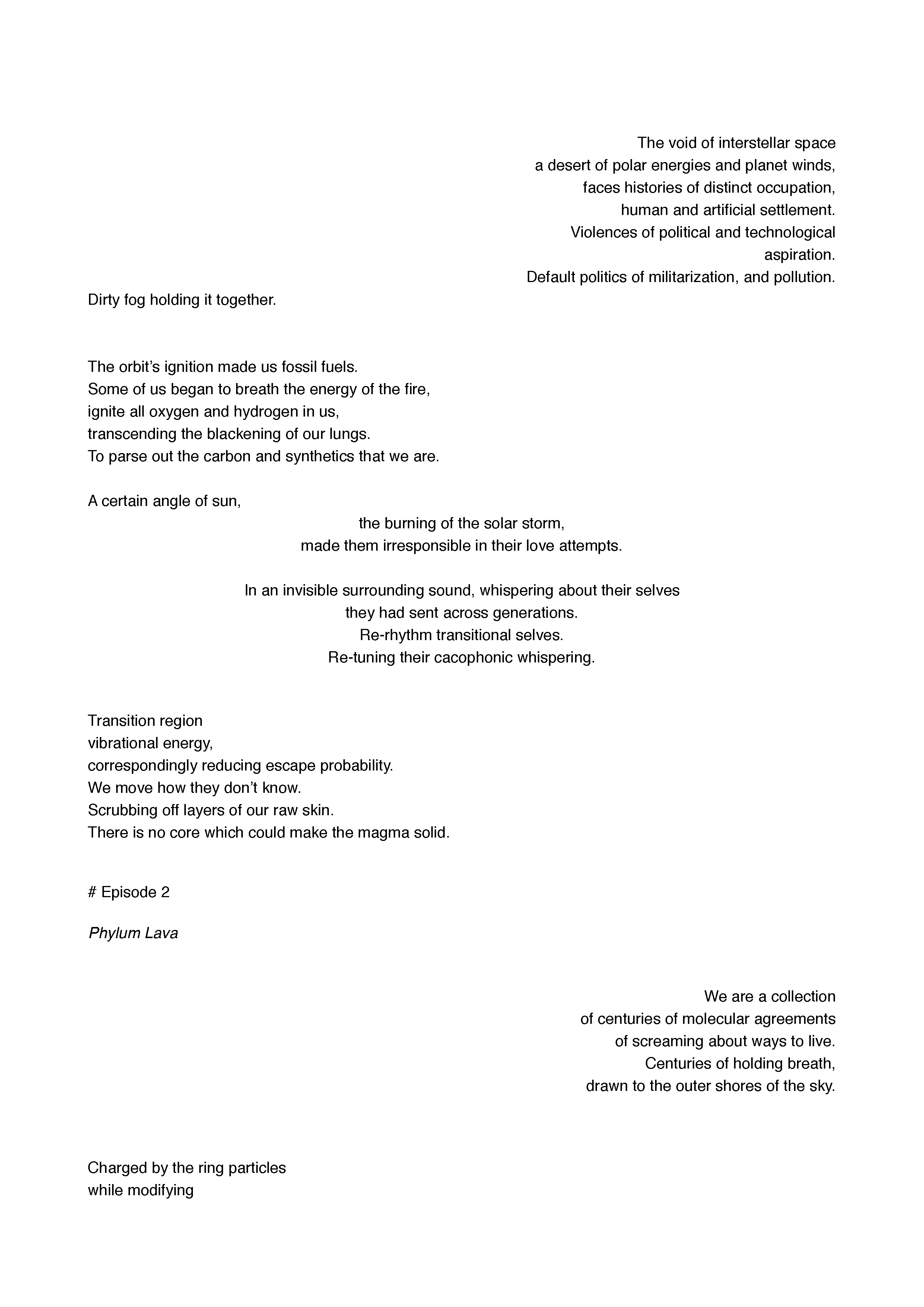
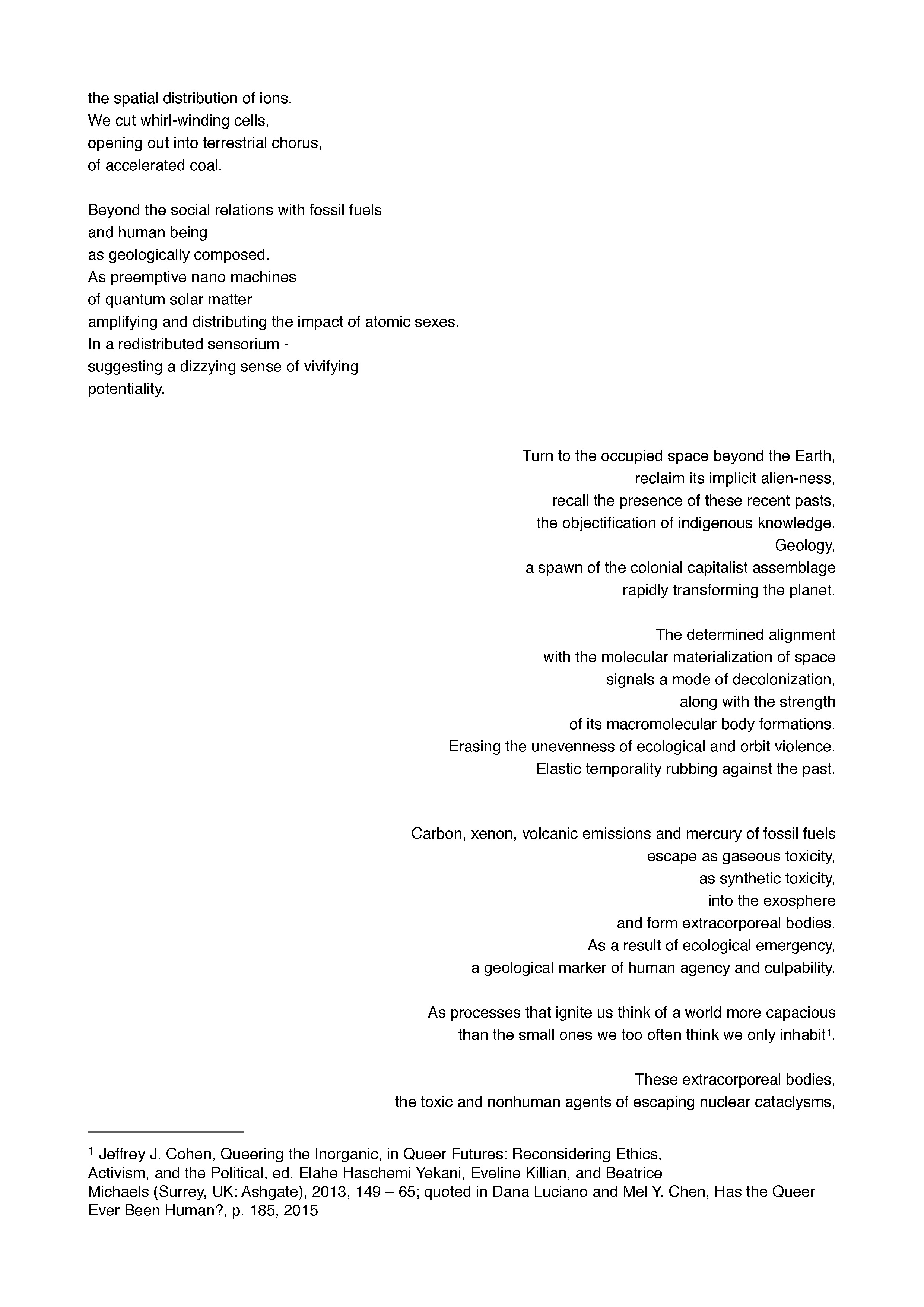
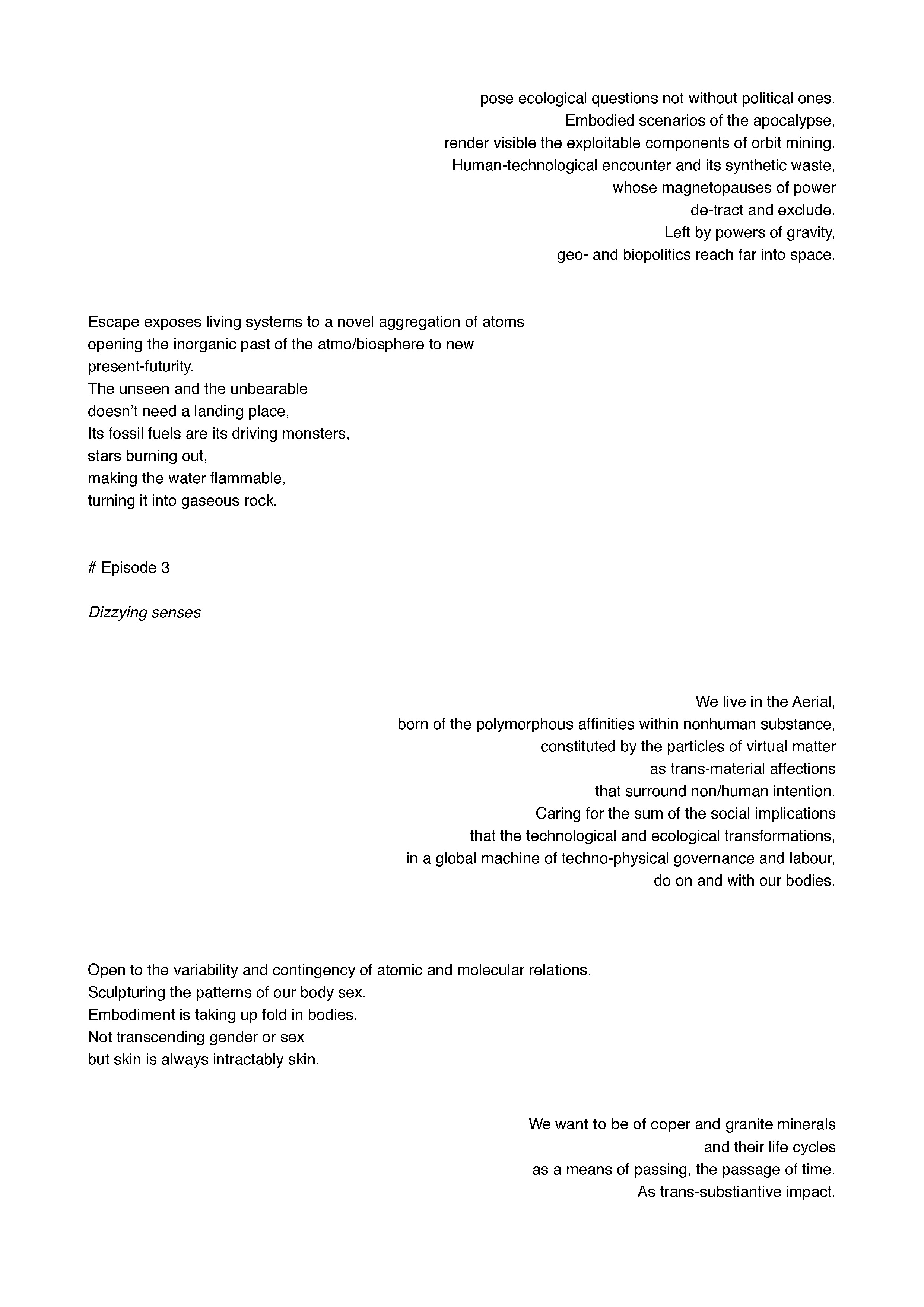
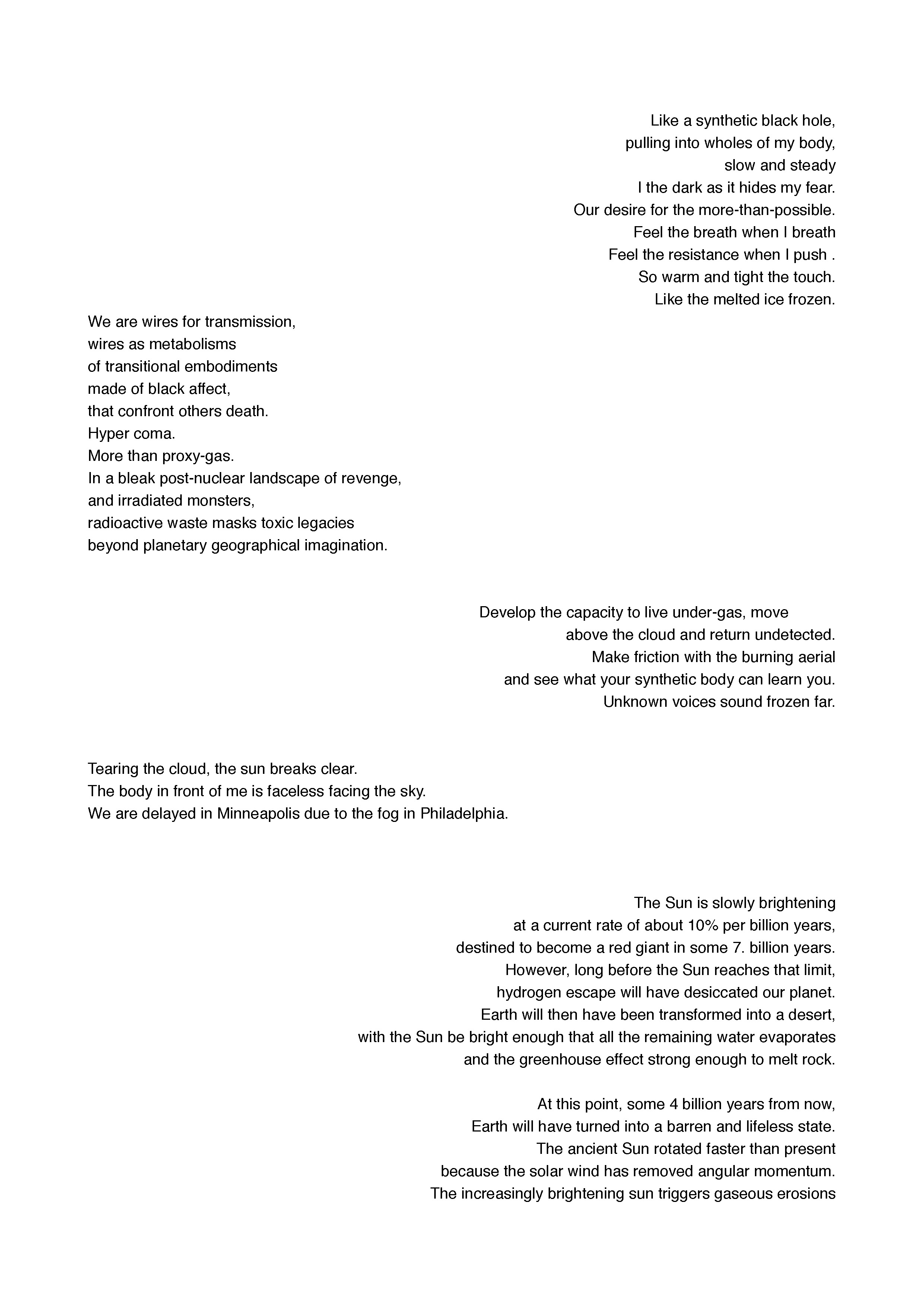

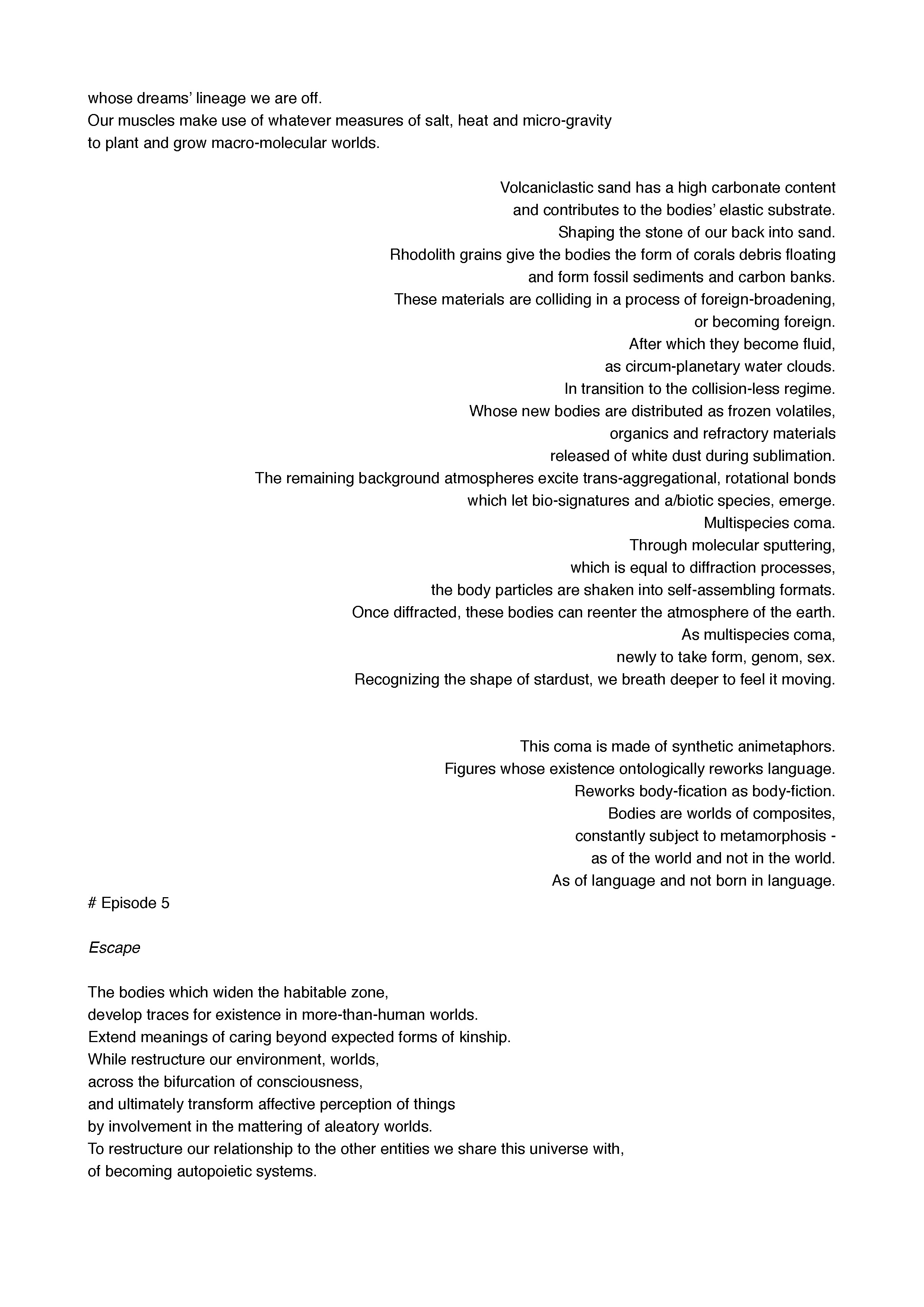
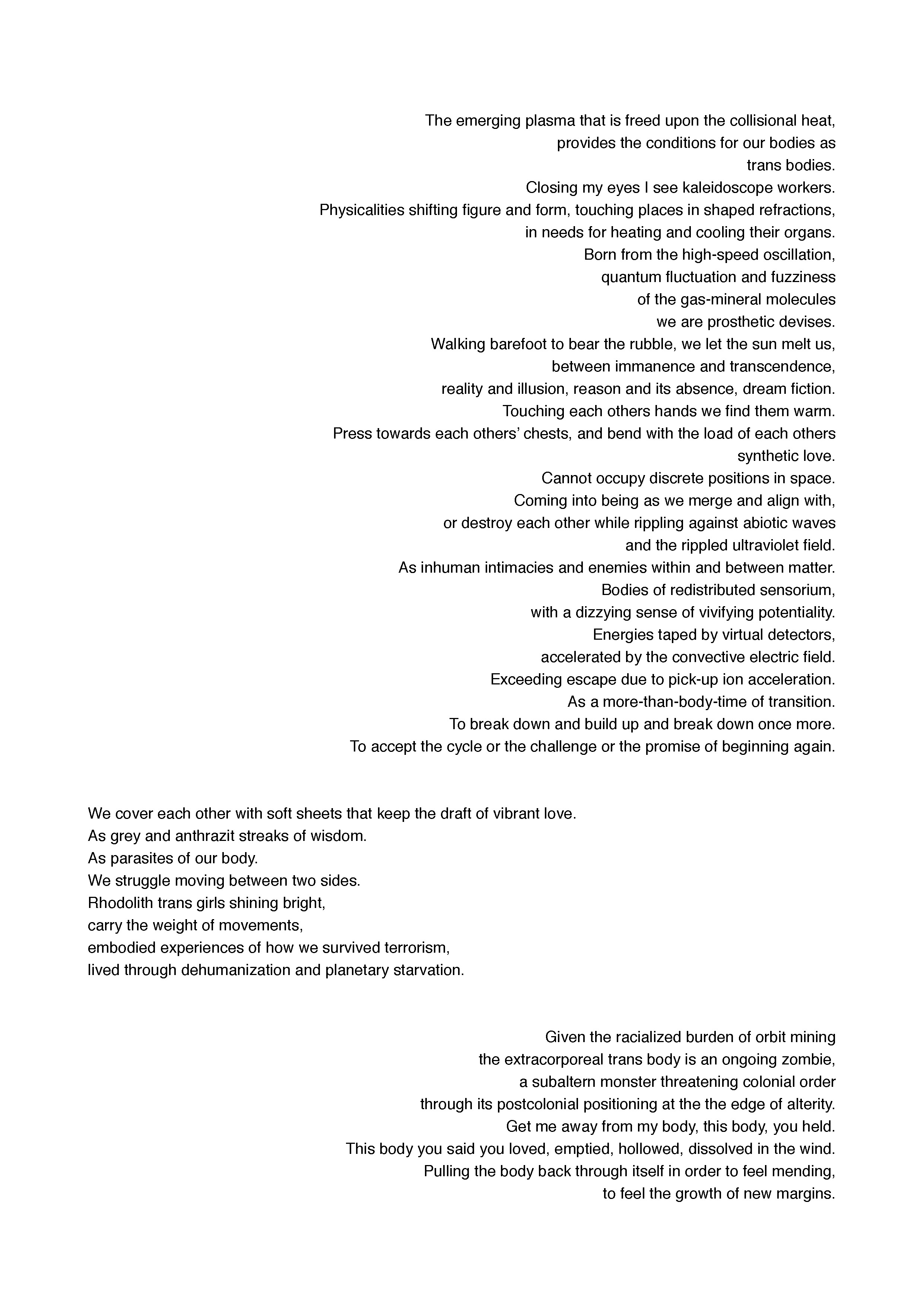
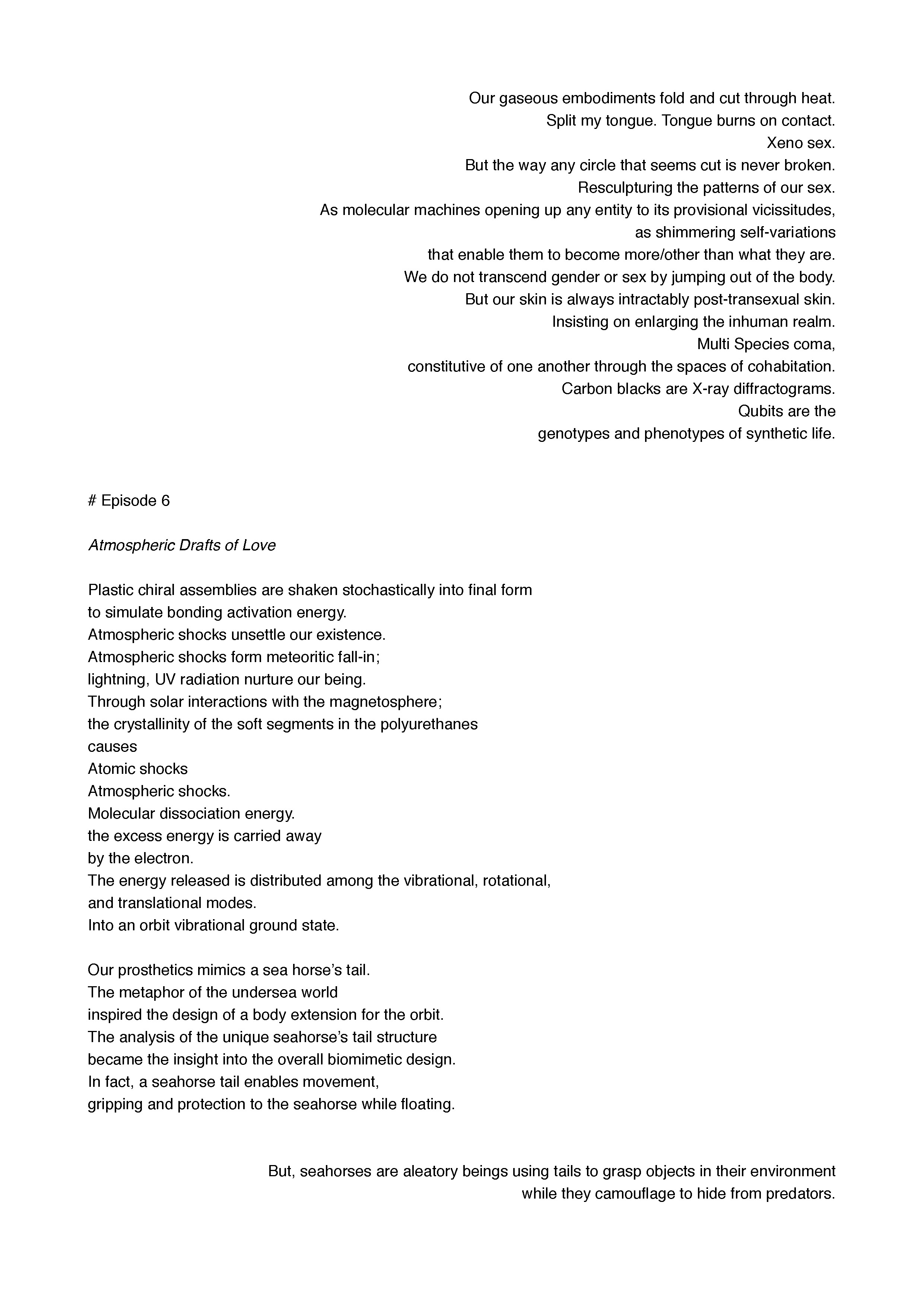


JB: I present the video installation Molecular Sex.
2. What is your personal approach to your art works?
JB: We currently live in intense times…intense times are interesting times…unsettle unknown streaks of wisdom. My recent studio at the Istituto Svizzero in Roma was high up in the tower - like a spaceship reaching into the sky. A bit like in the void of interstellar space - of polar energies and warm winds. One of transition region and vibrational energy. Amplifying and re-distributing my images, shaking them around, rubbing them against our and their past, leaving the powers of gravity. Beginning again and again. Caring for social implications that the technological and ecological transformations, in a global machine of techno-physical governance and labour, do on and with our bodies. Partly as a result of human emergency. Tearing the cloud line, the sun breaks clear. As oscillators of sensory experiences, the images explode and unfolded into signals and codes unknown to themselves. Aesthetics and languages of another temporality. Of vivifying potentialities and ubiquitous desire… Conceiving of bodies as affective multiplicities allows for differentiated and speculative perspectives on the interaction between physical and non-human entities. Thus I ask how indeterminacy of being, today, might inform hybrid temporalities better tooled to deal with current technological, political and ecological changes.
3. What is alien to you?
JB: Black crystalline gas escaping my bodily openings…Accelerating into coal-stardust. Turn to the occupied space beyond the Earth, reclaim its implicit queer-ness as unknown-ness, recall the presence of these recent pasts… which are never still… waves of synthetic, diffracted waste, of radioactive glare. Through atmospheric escape gaseous substances of the earth escape into space and form extracorporeal structures. How can these non-human physical formations and their languages be imagined and narrated. How can they help us to imagine possible future worlds… Escape exposes living systems to a novel aggregation of atoms opening the inorganic past of the atmo/biosphere to new present-futurity… The unseen and the unbearable doesn’t need a landing place - its fossil fuels are its driving monsters, stars burning out, making the water flammable, turning it into gaseous rock. As oscillators of sub-sensory experiences reorganizing present politics as orbitary agency of queer human and more-than human-ness. Of synthetic embrace…
4. How do you change perspective?
JB: The future is often portrayed as a breakdown of the human condition. In contrast, I see the hybridisation of the human and the non-human as the seed of an indeterminacy and general crossing of the boundaries of being. Imagination is a central instrument for the creation of new temporalities. By means of immersive, affective aesthetic languages and technical means I try to change the limits of the perceptual apparatus.
Johanna Bruckner – How will I remember your embrace











for more insight into Johanna Bruckners's work visit
www.johannabruckner.com/

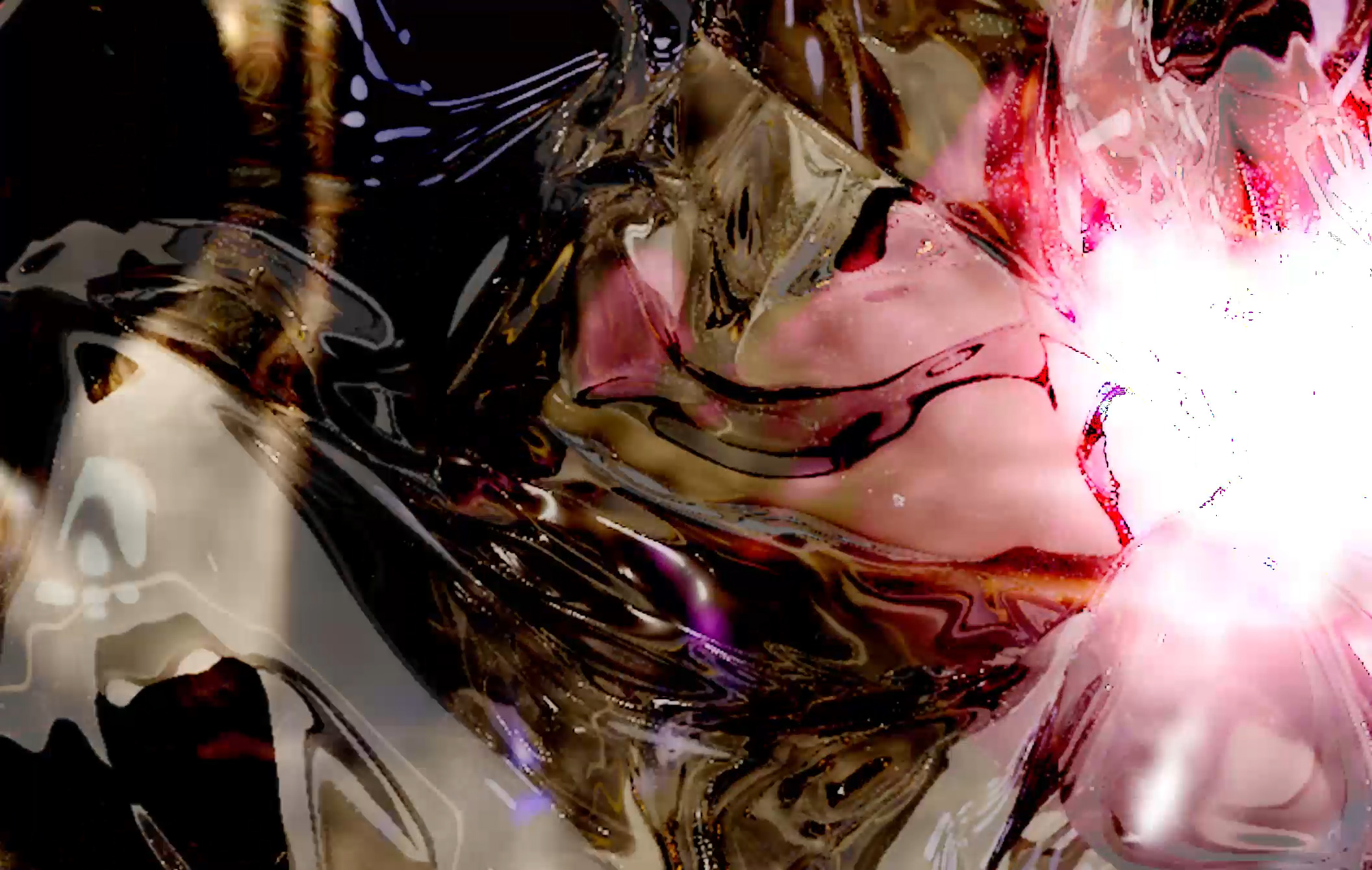
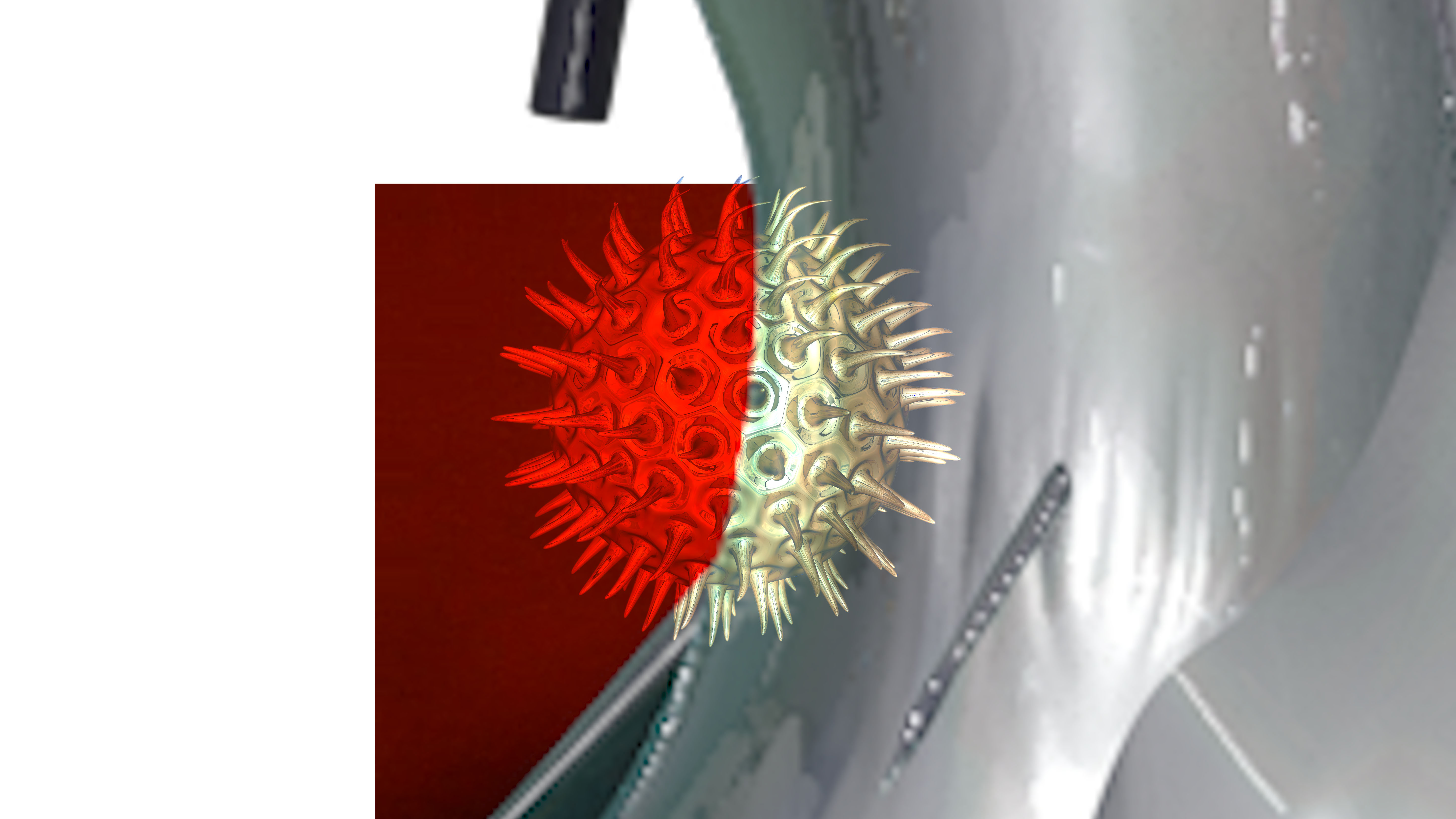
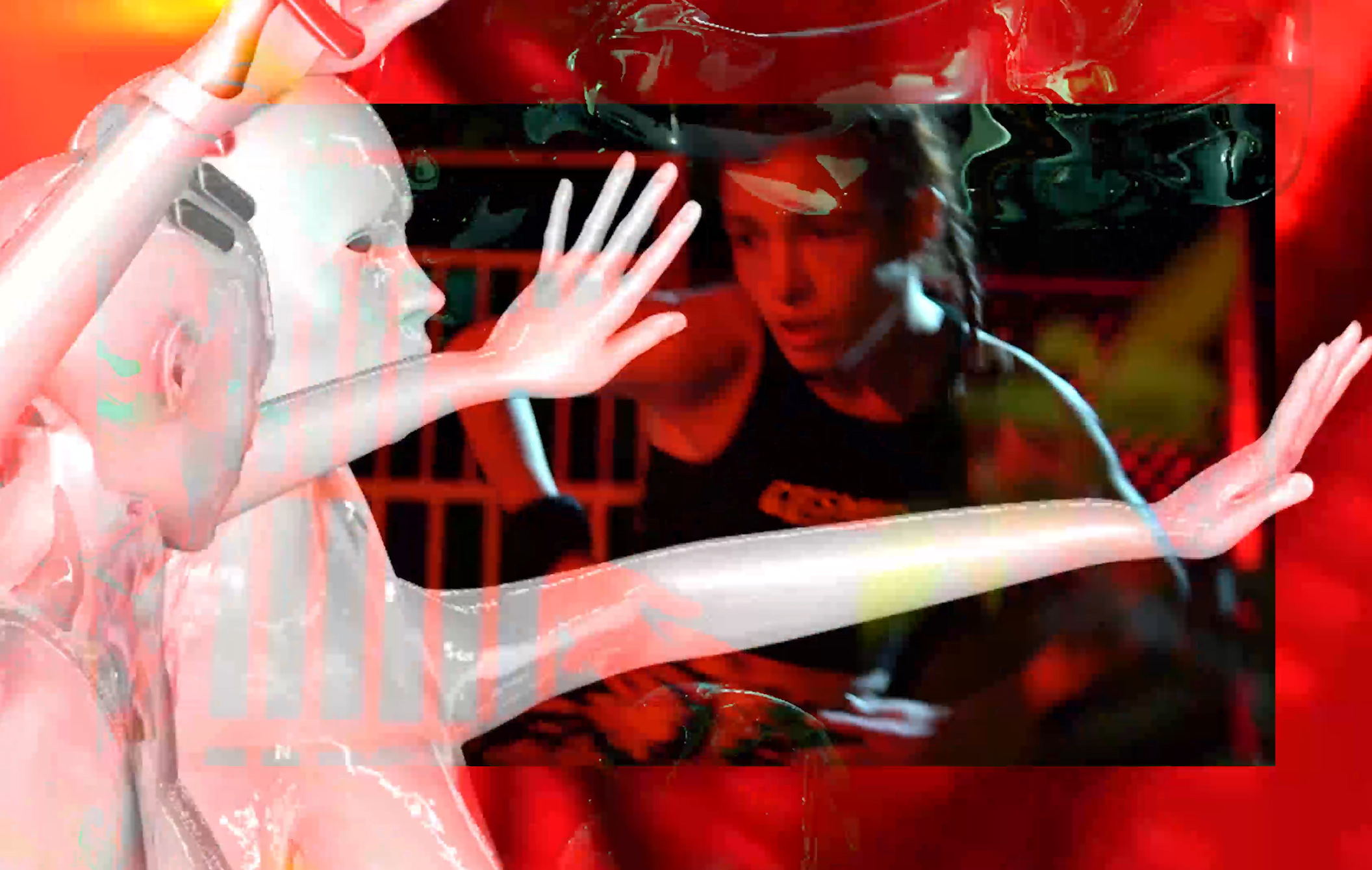
all images: Video still, Johanna Bruckner, 2020




all images: Video still, Johanna Bruckner, 2020